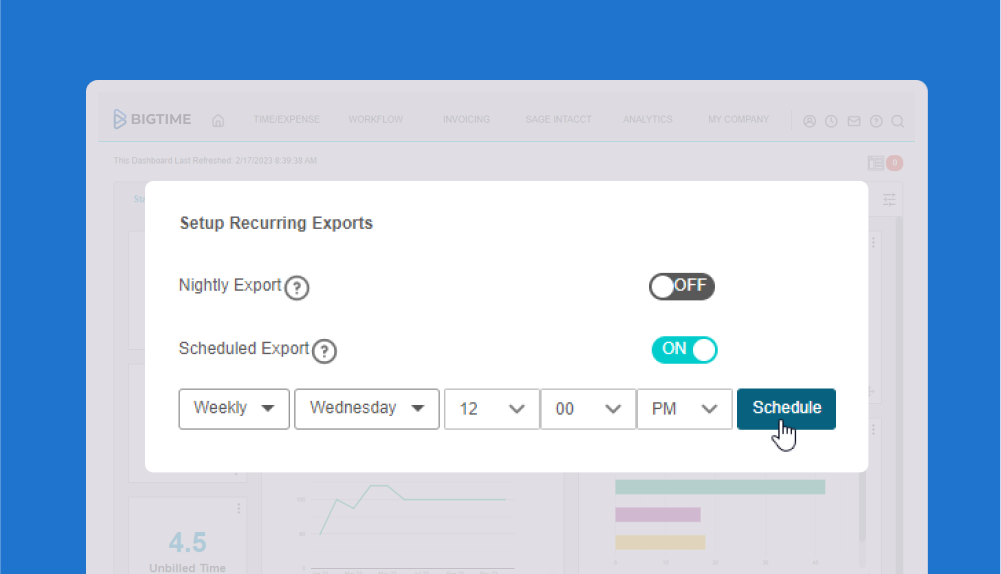In this article, we will:
Wrike is a well-known project management solution, often praised for its configurability and wide range of features. However, many teams eventually find Wrike to be overly complex, with steep learning curves and higher costs that can make it difficult to maintain at scale. For that reason, many businesses search for Wrike alternatives that are easier to use, more cost-effective, or better suited to their unique workflows.
In this article, we will:
- Explore the best alternatives to Wrike available in 2025.
- Highlight key features teams should look for in Wrike competitors.
- Compare pricing, pros, and cons of leading Wrike alternatives.
Why Look for Wrike Alternatives?
Wrike is a project management software often adopted by teams looking for granular task management, but its extensive customization comes at a cost. New users frequently face a steep learning curve, and configuring the platform to match organizational workflows can take weeks. While its enterprise-grade features are strong, smaller or mid-sized teams may find Wrike overwhelming and resource-heavy.
Additionally, many of Wrike’s most useful features, such as advanced reporting, resource allocation, and time tracking, are locked behind higher-tier plans. This can lead to difficulties with creating project plan and escalating costs, especially for growing teams.
Scalability is another challenge. As projects expand and team’s workload grows, Wrike’s interface can become cluttered and confusing without dedicated administrators. For companies that need quick onboarding, straightforward collaboration, and an intuitive setup, Wrike alternatives often provide a better balance of usability and functionality.
What Features Should the Best Wrike Alternatives Have?
When considering alternatives to Wrike, the goal is not just to replace it, but to improve processes while minimizing friction. That requires more than just simple planning; other features should also come in to play.
Therefore, the best Wrike alternatives in 2025 should offer:
- Ease of Use: Simple, intuitive navigation that requires little onboarding while offering numerous visual project tracking tools for improved information flow.
- Scalable Project Planning: Options for Kanban boards, Gantt charts, and project timelines, as well as customizable templates, cater to the needs of both small and large projects.
- Resource & Time Management: Built-in time tracking, workload balancing, and resource allocation tools are a must; AI-powered resource management and automated notifications are what makes the best Wrike alternatives stand out!
- Financial Management: Budget tracking, project cost management, and invoicing are essential features in Wrike alternatives to keep profitability in check.
- Collaboration and Communication Tools: Real-time updates, file sharing, and customizable roles are the backbone of efficient cooperation and data security.
- Advanced Reporting & Analytics: Comprehensive dashboards and exportable reports help project managers monitor project progress and make decisions based on the actual data instead of loose assumptions.
10 Best Wrike Alternatives
Here’s a quick list of the top Wrike alternatives in 2025:
- BigTime – A complete PSA software uniting project planning, financial tracking, and reporting.
- ClickUp – Highly flexible with multiple views but complex to master.
- Monday – Visual and adaptable boards, though clutter can be an issue.
- Trello – A simple Kanban-based tool, ideal for smaller projects.
- Notion – Flexible note-taking and project tracking, but requires structure.
- Smartsheet – Spreadsheet-based project tracking with strong controls.
- Airtable – Combines databases with project tracking, but needs careful setup.
- Basecamp – Straightforward communication-focused platform, but lacks depth.
- Kantata – Feature-rich PSA software, best for professional services firms.
- Asana – A popular work and task management tool, though limited for scaling.
Alternatives to Wrike – Comparison
| Tool | Description | Strengths | Limitations |
| BigTime | PSA software for professional services | Complete suite: time, billing, reporting, integrations | Learning curve for advanced features |
| ClickUp | All-in-one project platform | Highly customizable, multiple views | Can be overwhelming, pricey at higher tiers |
| Monday | Visual project boards | Easy to use, adaptable | Cluttered interface, expensive at scale |
| Trello | Kanban board system | Very simple and intuitive | Limited advanced features |
| Notion | Notes + lightweight project management | Extremely flexible | Requires discipline, lacks financial tools |
| Smartsheet | Spreadsheet-style planning | Powerful for structured data | Complex setup, less visual |
| Airtable | Database + project tracking | Customizable, versatile | Needs strong organization |
| Basecamp | Communication hub | Simple, affordable | Lacks advanced PM features |
| Kantata | Professional services automation | Resource planning, billing | Overly complex for small teams |
| Asana | Work management platform | Clean task management | Limited scalability |
In-Depth Reviews of Wrike Alternatives
BigTime
Reviews: G2: 4.5, Capterra: 4.6
Pros:
- Full PSA suite covering project planning, time tracking, billing, and reporting.
- Advanced financial features like invoicing and quoting built-in.
- AI-driven reporting and resource management tools.
- Scales seamlessly for both small and large firms.
- User-friendly interface with extensive support from BigTime team.
- Perfect choice for all types of professional services companies, from marketing agencies to IT companies.
Cons:
- Steeper learning curve due to advanced feature set.
BigTime stands out as the leading Wrike alternative, particularly for professional services firms. Unlike Wrike, BigTime is designed from the ground up to manage the intersection of projects, finances, and resources, providing a complete pverview of even the most complicated projects. With numerous advanced features included in the package, BigTime eliminates the need for multiple add-ons by integrating time tracking, invoicing, budgeting, and reporting in one place.
For firms managing billable hours, BigTime offers unparalleled control and visibility. Real-time reporting ensures managers always know where time and money are going, while its Gantt chart planning tools help balance workloads and optimize delivery. Additionally, AI-powered modules are an invaluable help in getting to the bottom of project management indicators in seconds, without rummaging through dozens of pages.
What is ore, BigTime is one of the very few Wrike alternatives that can grow with your business. The system contains a multitude of Its strong integrations with QuickBooks, Sage, and other systems make it easy to embed into existing workflows.
Key Features:
- Resource Management: Allocate staff, track skills, and monitor capacity. Monitor project and task dependencies and manage projects with zero errors.
- Project Planning: Use project templates to create battle-tested plans or create and forecast custom projects from start to finish.
- Time & Expense Tracking: Convert hours into cost data automatically. Calculate employee utilization, monitor time offs
- Financial Management: Budget, quote, and invoice within one system. Monitor every penny in costs and incomes with live updates and real-time statistics.
- Advanced Reporting: Real-time dashboards for profitability and utilization are just a start. With custom reporting capabilities and AI insights project managers have everything the need to make the right call every time.
- Advanced integrations: Seamlessly connects with accounting and CRM tools such as Quickbooks, Jira and Sage to create a bespoke digital environment for your company.
Pricing: Free trial available. Paid plans start at $20/user/month.

ClickUp
Reviews: G2: 4.7, Capterra: 4.7
Pros:
- Extremely customizable with multiple views (List, Board, Gantt, Timeline).
- Combines project management, documentation, and team chat in one platform.
- Wide integrations with Slack, Google Drive, and more.
- Advanced features like dashboards and OKR tracking.
Cons:
- Steep learning curve due to its complexity.
- Interface can feel cluttered with large projects.
- Performance issues in large workspaces.
- Most valuable features locked in higher-tier plans.
ClickUp is an all-in-one work management tool built for teams that want full flexibility. It supports multiple project views, custom workflows, and powerful automations, making it one of the most adaptable Wrike alternatives on the market. In this Wrike alternative, teams can consolidate tasks, documents, and communication into a single platform, reducing the need for separate tools.
However, its breadth of features often overwhelms new users, requiring careful setup and ongoing discipline to maintain structure. Additionally, ClickUp has limited project cost tracking features, forcing companies to look for external solutions. As a result, ClickUp might not be the best solution for organizations not willing to invest in customization.
Key Features:
- Multiple Views: Kanban, Gantt, Timeline, and Calendar.
- Custom Fields & Statuses: Flexible workflow design.
- Docs & Whiteboards: Collaboration beyond tasks.
- Automations: Streamline routine work.
- Dashboards: Visual reporting and goal tracking.
Pricing:
- Free plan available.
- Paid plans start at $10/user/month (Unlimited), with advanced features in the $19/user/month (Business) plan.
Trello
Reviews: G2: 4.4, Capterra: 4.5
Pros:
- Simple, drag-and-drop Kanban interface.
- Easy onboarding with low learning curve.
- Affordable entry-level pricing.
- Power-Ups and integrations extend functionality.
Cons:
- Limited built-in project management features.
- Can get cluttered with large teams or complex projects.
- Heavy reliance on add-ons for advanced functionality.
Trello is a lightweight project management tool centered on Kanban boards. Its simplicity makes it easy for individuals and small teams to get started, and the visual card system is ideal for managing straightforward tasks or smaller projects. As a result, it is a common choice for firms looking for simple team collaboration wrapped in an intuitive interface.
However, Trello lacks advanced capabilities such as resource management, time tracking, or robust reporting. Similar to many Wrike alternatives, it also offers no financial features, effectively limiting management to the simplest resource management. Additionally, as projects grow and complex workflows come into play, teams often find themselves relying heavily on Power-Ups, which adds both complexity and cost.
Key Features:
- Kanban Boards: Visual task organization with lists and cards.
- Checklists & Custom Fields: Add more details to tasks.
- Power-Ups: Add calendars, Gantt views, and reporting tools.
- Automations: Use Butler to simplify repetitive tasks.
- Collaboration: Commenting, file attachments, and notifications.
Pricing:
- Free plan available.
- Paid plans start at $5/user/month (Standard), with advanced features at $10/user/month (Premium).
Notion
Reviews: G2: 4.7, Capterra: 4.7
Pros:
- Extremely flexible for notes, wikis, and tasks.
- Customizable databases and views.
- Affordable pricing for small teams.
- Can foster collaboration with documentation features.
Cons:
- Requires careful setup to stay organized.
- Only basic features for project management.
- Can feel overwhelming without consistent structure.
- Limited offline functionality.
Notion is an all-in-one workspace that blends documentation, project tracking, and databases. Its modular design allows teams to create customized pages and workflows tailored to their unique needs, making it appealing for teams that want more than just task management. It also facilitates basic team communication, ensuring everyone is on the same page.
Still, Notion’s flexibility is both its strength and weakness – especially when it’s considered as one of the Wrike alternatives. Without strict organization, workspaces can become cluttered, and its lack of built-in resource planning or financial features means it may not fully replace Wrike for more complex project needs.
Key Features:
- Databases: Create tables, Kanban boards, calendars, and lists.
- Pages & Wikis: Build team knowledge bases.
- Custom Properties: Add structured data fields to tasks.
- Templates: Use pre-built or custom templates for consistency.
- Collaboration Tools: Commenting, mentions, and sharing options.
Pricing:
- Free plan available.
- Paid plans start at $8/user/month (Plus), with $15/user/month (Business) for advanced permissions.
Smartsheet
Reviews: G2: 4.4, Capterra: 4.5
Pros:
- Familiar spreadsheet-like interface.
- Multiple project views including Gantt and Calendar.
- Strong automation and integration options.
- Handles large datasets effectively.
Cons:
- Steeper learning curve for non-spreadsheet users.
- Interface can feel outdated and cluttered.
- Many advanced features require higher-tier plans.
- Less visually engaging than modern tools.
Smartsheet is designed for teams that prefer a structured, spreadsheet-driven approach to project management. It allows detailed planning, automation of workflows, and scalable collaboration for complex projects, making it a strong Wrike alternative for data-heavy teams.
However, its spreadsheet-based model may feel rigid or overwhelming for those seeking a more modern, intuitive interface. Additionally, advanced features like resource management and project reporting are locked behind premium tiers, which can increase costs as teams grow.
Key Features:
- Grid, Gantt, and Calendar Views: Plan projects in multiple formats.
- Formulas & Linking: Spreadsheet-style data management.
- Automation Rules: Streamline repetitive tasks.
- Resource Management: Track workloads (higher-tier plans).
- Dashboards: Visualize project metrics for insights.
Pricing:
- Free trial available.
- Paid plans start at $7/user/month (Pro), with advanced features at $25/user/month (Business).
Airtable
Reviews: G2: 4.7, Capterra: 4.7
Pros:
- Combines spreadsheets with database functionality.
- Multiple views: Grid, Kanban, Timeline, and Calendar.
- Rich field types for flexible project setups.
- Strong integration options with third-party tools.
Cons:
- Requires thoughtful setup to avoid disorganization.
- Limited built-in project management features.
- Many advanced permissions and automations locked behind higher tiers.
- Can be complex for teams unfamiliar with databases.
Airtable reimagines project management by turning tasks into flexible databases. It gives teams the power to design custom workflows, wokrflow automation and visualize data in different ways, making it ideal for complex or non-traditional project structures.
That said, Airtable’s customization demands careful planning. Without clear organization, workspaces can become cluttered, and key features like advanced automations or permissions often require upgrading to more expensive plans. As a result, for companies looking for a more comprehensive approach, Airtable is not the best Wrike alternative.
Key Features:
- Custom Views: Grid, Kanban, Gallery, Timeline, and Calendar.
- Rich Field Types: Attachments, checkboxes, linked records.
- Relational Databases: Connect and structure data across tables.
- Automations: Rule-based triggers for repetitive tasks.
- Integrations: Works with Slack, Google Drive, and more.
Pricing:
- Free plan available.
- Paid plans start at $10/user/month (Plus), with $20/user/month (Pro) for advanced features.
Basecamp
Reviews: G2: 4.1, Capterra: 4.3
Pros:
- Simple, easy-to-use interface with minimal setup.
- Combines communication, tasks, and schedules in one place.
- Flat pricing model makes it affordable for larger teams.
- Reduces reliance on long meetings and email threads.
Cons:
- Limited advanced project management features.
- Lacks tools like Gantt charts, resource planning, or detailed reporting.
- Few customization options compared to Wrike or BigTime.
- Too basic for managing complex projects.
Basecamp is built for teams that want a straightforward collaboration hub rather than a fully-featured project management system. It includes to-do lists, message boards, chat, schedules, and file sharing in a single workspace, making it easy for teams to stay aligned.
However, Basecamp’s simplicity comes at the cost of depth. It lacks the advanced planning, reporting, and resource management capabilities that Wrike offers, which makes it unsuitable for organizations managing large or complex projects. Still, for small teams that value clarity and communication over heavy project control, Basecamp can be a practical Wrike alternative.
Key Features:
- Message Boards: Centralized team discussions.
- To-Do Lists: Simple task tracking with due dates.
- Schedules: Calendar for project milestones and events.
- Campfire Chat: Real-time messaging within projects.
- File Sharing: Store and access documents in one place.
Pricing:
- Free personal plan for small teams.
- Flat $99/month (Business plan) for unlimited users.
Kantata
Reviews: G2: 4.2, Capterra: 4.2
Pros:
- Built specifically for professional services organizations.
- Strong resource planning, budgeting, and time tracking tools.
- Integrates with financial systems to reduce manual work.
- Detailed reporting and analytics.
Cons:
- Steeper learning curve compared to lighter tools.
- Interface can feel dated and less intuitive.
- Requires significant setup to fully leverage features.
- Advanced functionality locked behind higher-tier pricing.
Kantata is a powerful project and resource management tool aimed at service-based firms. It brings together project planning, time and expense tracking, financial oversight, and billing into a single platform, giving managers strong control over project profitability and utilization.
The downside is its complexity. Smaller teams may struggle with the learning curve, and customizing the platform to fit specific workflows often requires careful planning. For larger professional services organizations, though, Kantata can be a strong Wrike alternative thanks to its specialized feature set.
Key Features:
- Project Management: Plan projects with timelines, budgets, and tasks.
- Resource Planning: Assign staff based on skills and availability.
- Time & Expense Tracking: Capture billable hours directly.
- Financial Management: Integrated budgeting, invoicing, and billing.
- Reporting: Generate in-depth analytics for strategic decision-making.
Pricing:
- Custom pricing based on team size and features, usually targeted at mid-to-large services firms.
- Asana
Reviews: G2: 4.3, Capterra: 4.5
Pros:- Clean, intuitive interface with quick onboarding.
- Popular task management features like lists, boards, and calendars.
- Strong collaboration tools with comments, mentions, and notifications.
- Large library of integrations with apps like Slack, Google Workspace, and Microsoft Teams.
- Cons:
- Lacks advanced features like resource planning or financial management.
- Reporting and workload tools are limited compared to Wrike.
- Can become cluttered with many projects or large teams.
- Best suited for simple to mid-level project management needs.
- Asana is one of the most widely adopted project management tools, known for its simplicity and accessibility. As a result, it is also a popular Wrike alternative. It helps teams track projects through tasks, deadlines, and milestones in a highly visual way, making it appealing for organizations just starting with structured project management.
That said, Asana’s strengths are in task coordination rather than advanced project oversight. Unlike Wrike or BigTime, it doesn’t provide built-in budgeting, invoicing, or detailed resource management. This makes it a good Wrike alternative for smaller teams but not the best choice for organizations managing complex, resource-heavy projects.
Key Features:- Task Management: Assign tasks with deadlines, priorities, and dependencies.
- Multiple Views: List, Board, Calendar, and Timeline.
- Collaboration: Real-time updates, file sharing, and team communication.
- Integrations: Works with 200+ apps, including Zoom and Dropbox.
- Automation: Streamline task creation and status updates.
- Pricing:
- Free plan available for individuals and small teams.
- Paid plans start at $10.99/user/month (Premium), with advanced features in $24.99/user/month (Business).
Which Wrike Alternative is the Best?
While all of these Wrike competitors offer valuable features, BigTime emerges as the best Wrike alternative. Unlike Wrike and many other tools, BigTime’s robust project management software unifies project management with financial oversight, invoicing, and resource planning. This makes it especially powerful for professional services organizations that need profitability insights, not just task tracking.
Thousands of companies worldwide rely on BigTime to reduce wasted hours, recover lost revenue, and streamline delivery. Its ability to scale with your business makes it the most future-proof Wrike alternative on the market.
Want to see it in action? Book a weekly demo or start a free trial today.
Which Wrike Alternative is the Best for Small Businesses?
Small businesses need project management software that is affordable, easy to use, and capable of scaling as they grow. While lightweight tools like Trello or Basecamp are simple to adopt, they quickly fall short when it comes to tracking time, managing budgets, or creating reports.
This is where BigTime shines. It gives small businesses all the essentials—project planning, time tracking, invoicing, and reporting—without overwhelming users with unnecessary complexity. Unlike Wrike, BigTime keeps financials and resources connected to projects, making it easier for smaller teams to stay profitable and efficient from day one.
For small businesses looking for a Wrike alternative that grows with them, BigTime is the smartest choice.




